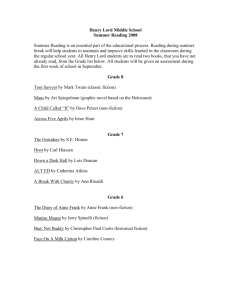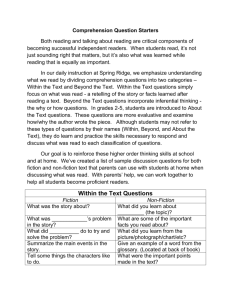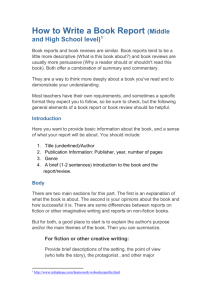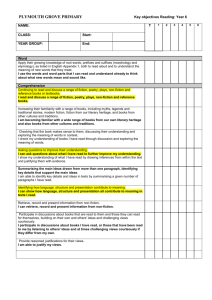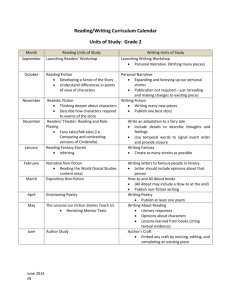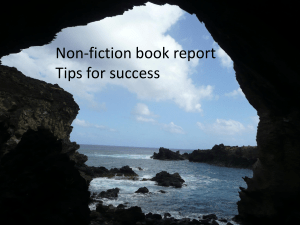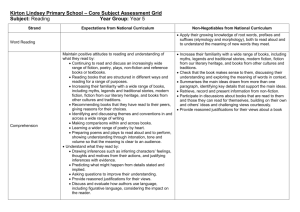Teaching Guide - GIS at Lane Community College
advertisement
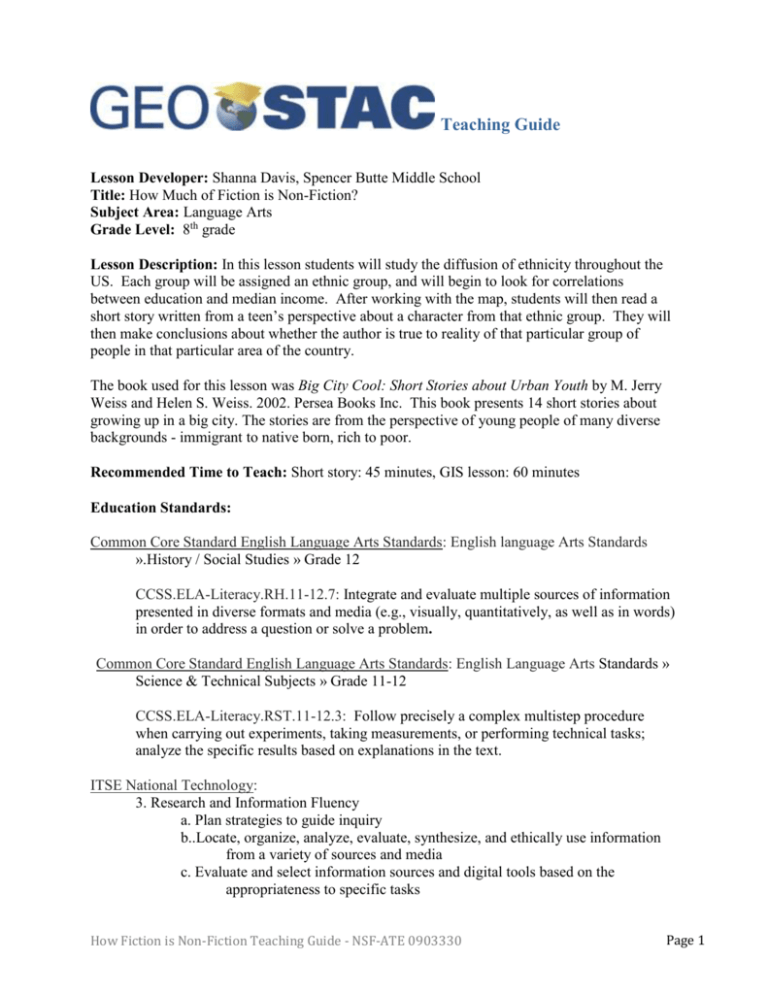
Teaching Guide Lesson Developer: Shanna Davis, Spencer Butte Middle School Title: How Much of Fiction is Non-Fiction? Subject Area: Language Arts Grade Level: 8th grade Lesson Description: In this lesson students will study the diffusion of ethnicity throughout the US. Each group will be assigned an ethnic group, and will begin to look for correlations between education and median income. After working with the map, students will then read a short story written from a teen’s perspective about a character from that ethnic group. They will then make conclusions about whether the author is true to reality of that particular group of people in that particular area of the country. The book used for this lesson was Big City Cool: Short Stories about Urban Youth by M. Jerry Weiss and Helen S. Weiss. 2002. Persea Books Inc. This book presents 14 short stories about growing up in a big city. The stories are from the perspective of young people of many diverse backgrounds - immigrant to native born, rich to poor. Recommended Time to Teach: Short story: 45 minutes, GIS lesson: 60 minutes Education Standards: Common Core Standard English Language Arts Standards: English language Arts Standards ».History / Social Studies » Grade 12 CCSS.ELA-Literacy.RH.11-12.7: Integrate and evaluate multiple sources of information presented in diverse formats and media (e.g., visually, quantitatively, as well as in words) in order to address a question or solve a problem. Common Core Standard English Language Arts Standards: English Language Arts Standards » Science & Technical Subjects » Grade 11-12 CCSS.ELA-Literacy.RST.11-12.3: Follow precisely a complex multistep procedure when carrying out experiments, taking measurements, or performing technical tasks; analyze the specific results based on explanations in the text. ITSE National Technology: 3. Research and Information Fluency a. Plan strategies to guide inquiry b..Locate, organize, analyze, evaluate, synthesize, and ethically use information from a variety of sources and media c. Evaluate and select information sources and digital tools based on the appropriateness to specific tasks How Fiction is Non-Fiction Teaching Guide - NSF-ATE 0903330 Page 1 d. Process data and report results 4. Critical Thinking, Problem Solving, and Decision Making c. Collect and analyze data to identify solutions and/or make informed decisions 5. Digital Citizenship b. Exhibit a positive attitude toward using technology that supports collaboration, learning, and productivity 6. Technology Operations and Concepts a. Understand and use technology systems b. Select and use applications effectively and productively National Geography Standards 1) How to use maps and other geographic representations, geospatial technologies, and spatial thinking to understand and communicate information 2) How to analyze the spatial organization of people, places, and environments on Earth's surface 3) How to apply geography to interpret the present and plan for the future Learning Objectives: Geospatial Concepts: 1) Comparison and Region: Students will compare ethnic statistics of different regions of the United States to look for similarities between ethnicity, schooling, and income 2) Association: Students will develop hypothesizes on possible correlations and causations between the data. Other Discipline: Students will find demographic data about specific counties related to the short stories previously read in class, and will make connections between the fiction written and fact. Career Connection: Students will research careers that use the demographic data used during the lesson (population, median income, schooling, and ethnicity). Materials: Short stories written from an ethnic teen’s perspective Computer Pencil/GeoSTAC Student Lesson handout Prerequisites: Students will need to have a basic understanding of how an author’s experience in life shapes and defines his or her writing. In this course we read many, many pieces of writing, both fiction and non, from people not ethnically represented in Eugene, Oregon. The Lesson Anticipatory Set: Using a novel that we have previously read in class, The Absolutely True Story of a Part-Time Indian, students will discuss how Sherman Alexie’s life growing up affected his writing. As a class, we will then discuss how this story may have been different if How Fiction is Non-Fiction Teaching Guide - NSF-ATE 0903330 Page 2 he was an African American teen living in LA, or if he was a Mexican American living in San Antonio. Students will then read the short story provided before the GIS section of the lesson. Developing the Lesson: After reading the short story, students will hypothesize what city the story is set in and what ethnicity the main character is. This will help lead students to the appropriate county the story is set in (we will look these up using Wikipedia), and the correct ethnic group. As a class, we will also discuss whether or not the main character is a minority in the community he/she lives in, or if he/she is of a well-represented ethnic group. This will lead us into an exit write and then discussion of how factual (non-fiction) or fictional short story really is. Concluding the Lesson: The teacher will ask students to brainstorm possible plots and scenarios, based on their own experiences, they can use when writing their own short story. This will transition very well into a short story writing unit. Career Connections: Students will research and learn how demographic data is used in many careers and industries. It isn’t just interesting information- it is incredibly useful! Assessment/Evaluation: Students will be given an exit write asking them to explain what aspects of the short story was fiction, and what was non-fiction. They will also be asked to give specific examples that support their claims. How Fiction is Non-Fiction Teaching Guide - NSF-ATE 0903330 Page 3
